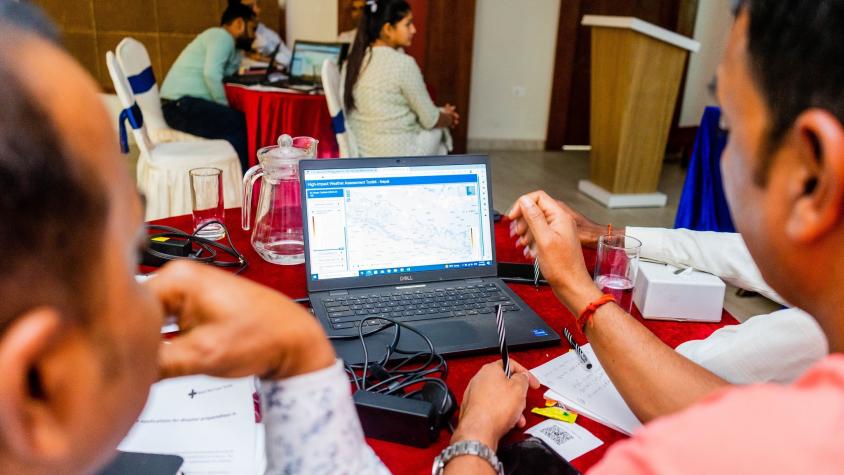Monitoring Extreme Weather in the Hindu Kush Himalaya

The Monitoring Extreme Weather in the Hindu Kush Himalaya (HKH) service provides a customized numerical weather prediction toolkit to assess high impact convective weather events over the HKH region. The High Impact Weather Assessment Toolkit (HIWAT) uses a mesoscale numerical weather prediction model and the Global Precipitation Measurement (GPM) constellation of satellites. The toolkit will include a suite of ensemble model forecasts to constrain the uncertainties and provide a probabilistic forecast for improved decision making. The toolkit will provide outlooks for lightning strikes, high impact winds, high rainfall rates, hail damage, and other weather events. The outlooks will be provided for 54 hours over Bangladesh, Nepal, and Bhutan as well as within parts of Pakistan, Afghanistan, and northeast India. HIWAT provides critical inputs for the Flash Flood Prediction Tool (FFPT) providing communities with locally relevant data. Additionally, HIWAT also provides a Fire Weather Index (FWI) product, which is essential for informing land and fire management teams within Nepal. A mobile application is in development to reach the community level.
Rationale
Extreme weather events claim many human lives and cause economic losses every year in the HKH region. HKH is a hotspot for some of the most intense thunderstorm activity taking place globally. However, the region lacks in situ observations for monitoring thunderstorms due to both the remoteness of the region as well as limited technical and economic capacity. As a result, the monitoring and evaluation of extreme weather events in HKH to assess their geographic scale and the damage after they occur is seldom carried out.
-
Users
Department of Hydrology and Meteorology (DHM), Nepal
Bangladesh Meteorological Department (BMD)
Practical Action Nepal
Nepal Red Cross Society
Armed Police Force (APF) of Nepal
National Center for Hydrology and Meteorology (NCHM), Bhutan
Department of Hydrology and Meteorology (DHM), Nepal
Bangladesh Meteorological Department (BMD)
Practical Action Nepal
Nepal Red Cross Society
-
Publications

